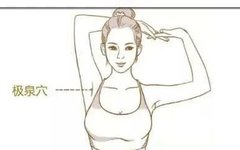The human body is an organic whole, with the five zang organs (heart, liver, spleen, lung, kidney) and six fu organs (gallbladder, stomach, small intestine, large intestine, bladder, san jiao) interconnected through meridians. The zang and fu organs are like the essential facilities in a city, such as water plants, power plants, communication facilities, substations, and waste treatment plants, while the meridians are the various networks connecting these basic infrastructures, like water pipelines, power grids, and roads. The zang and fu organs are fundamental, but the networks are also indispensable, making the human body a complete individual. Traditional Chinese Medicine (TCM) believes that through the internal and external connections of the meridians, changes in the zang and fu organs can be reflected on the body surface, leading to specific symptoms and signs. Stimulating the corresponding acupuncture points on the body surface can treat diseases of the corresponding zang and fu organs, as the saying goes, “What is within must manifest without; by observing the outside, one can understand the inside and treat the outside to adjust the inside.”
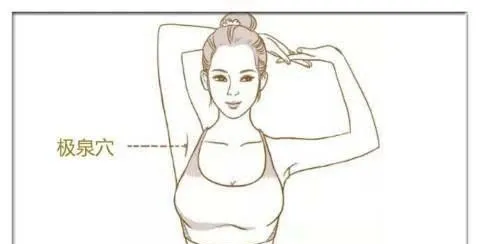
1. Massaging the Heart Meridian’s Jiquan Point Nourishes the Heart and Calms the Spirit
Massaging the acupuncture points on the heart meridian can be beneficial for treating heart diseases. For example, the Jiquan point on the heart meridian is a famous point for treating heart disease. Regularly pressing the Jiquan point can calm the heart and spirit, relieve depression, and stop fright.
The specific method is: place the four fingers of your right hand on the outer side of the left pectoralis major, with the thumb pressing on the inner side of the pectoralis major. Then use the index and middle fingers to gently press on the Jiquan point under the armpit; while pinching the pectoralis major, use the index and middle fingers to knead this point, repeating the process 10 times, then switch hands and repeat.

2. Massaging the Liver Meridian’s Taichong Point Can Soothe the Liver and Relieve Depression
Massaging the Taichong point on the liver meridian can soothe the liver, relieve depression, regulate qi and blood, transform dampness, and unblock the meridians. It is effective for symptoms such as fullness in the hypochondrium, headaches, dizziness, hernia pain, urinary difficulties, and menstrual irregularities. This method is especially suitable for those who tend to bottle up their anger.
The specific method is: use your thumb to massage the Taichong point, pressing and kneading from bottom to top, and massage both feet. Each side should be massaged for 5 minutes. You can also knead from the Taichong point to the Xingjian point, transferring the pain from the Taichong point to the Xingjian point for better results.
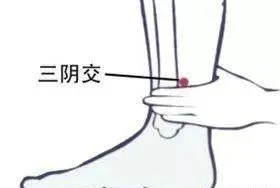
3. Massaging the Spleen Meridian’s Sanyinjiao Point Can Strengthen the Spleen and Nourish Blood
Regularly massaging the spleen meridian can strengthen the spleen and nourish blood. The Sanyinjiao point is where the spleen, kidney, and liver meridians intersect, making it a magical remedy for gynecological diseases. Regularly massaging this area can prevent and treat menstrual irregularities, dysmenorrhea, excessive leukorrhea, metrorrhagia, pelvic inflammatory disease, abdominal pain, diarrhea, and digestive disorders. It is important to note that ancient practitioners used this point for abortion, so pregnant women should avoid massaging this area.
The specific method is: (1) press the tip of your thumb on the Sanyinjiao point, then gradually apply deeper pressure while twisting; (2) gently and slowly knead the Sanyinjiao point with the pad of your thumb.
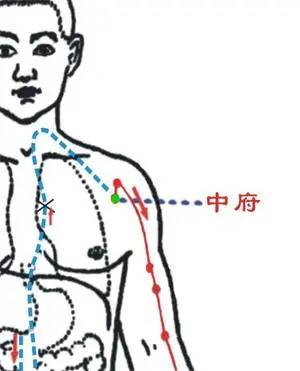
4. Massaging the Lung Meridian’s Zhongfu Point Can Treat Lung Diseases
Massaging the lung meridian can improve symptoms such as shortness of breath, cough, dry throat, runny nose, and asthma. For example, regularly massaging the Zhongfu point on the lung meridian can prevent and treat cough and asthma.
The specific method is: use both thumbs to press on the Zhongfu points on either side of the chest, pressing at least 5 times each time, holding each press for 3-5 seconds.
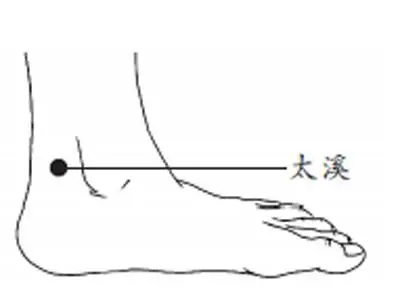
5. Massaging the Kidney Meridian’s Taixi Point Can Improve Kidney Function
The Taixi point is a key point on the kidney meridian, historically known as one of the “Nine Points to Return Yang.” Regularly massaging this point has a significant effect on improving kidney function.
The specific method is: use the thumb of the opposite hand to knead the Taixi point, or use a massage stick or smooth wooden stick to knead, ensuring the pressure is gentle enough to feel a slight soreness.
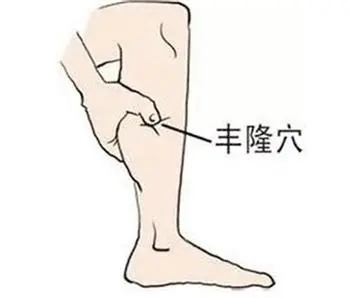
6. Massaging the Gallbladder Meridian Can Reduce Belly Fat
The qi and blood flow through the gallbladder meridian during the hour of the gallbladder (11 PM to 1 AM). At this time, the yang energy of the body is just beginning to rise. If we eat food during this time, the energy we consume will be converted into fat. Taking advantage of this time when qi and blood flow through, the meridians around the gallbladder can accumulate and store, easily leading to belly fat. To reduce your belly fat, you can frequently press the Fenglong point on the gallbladder meridian.
The specific method is: place your left (right) leg on the opposite knee, with the tip of your right (left) middle finger on the Fenglong point, and the thumb on the opposite side, applying pressure for a minute. Do this once in the morning and once in the evening.
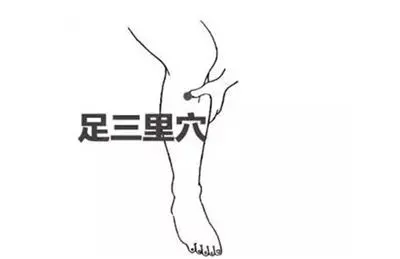
7. Regularly Tapping the Stomach Meridian Can Aid Weight Loss
Overeating can damage the spleen and stomach, leading to spleen and stomach deficiency, impaired digestion, and fat accumulation, which is a mechanism for obesity. Tapping the stomach meridian daily can help eliminate excess body fat without rebound.
The specific method is: starting from below the collarbone, tap down along the two breasts, over the abdomen, and down the front of both legs, all the way to the ankles. When tapping the stomach meridian, apply moderate force, ensuring to tap along the meridian from the outer side of the tibia to the line connecting the second toe, starting from the Zusanli point. Areas that are painful are acupuncture points and should be focused on; also, tap the highest point on the dorsum of the foot.
8. Massaging the Small Intestine Meridian Can Treat Shoulder and Arm Pain
Shoulder and arm pain is one of the symptoms associated with the small intestine meridian. If we gently press and knead the small intestine meridian along the outer side of the arm, we can improve this discomfort.
When massaging the small intestine meridian, first locate its pathway, which runs from the outer side of the little finger up along the outer edge of the arm, then after reaching the shoulder joint, it moves towards the spine for a distance, and then forward along the neck to the cheekbone, and finally to the ear. Massage along the meridian upwards.
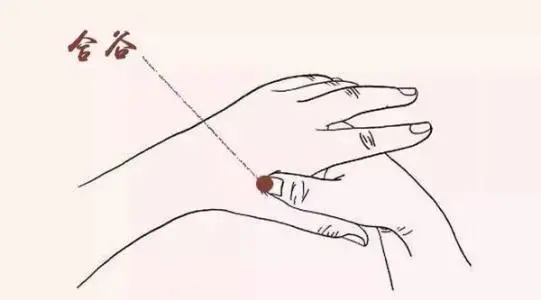
9. Massaging the Large Intestine Meridian’s Hegu Point Can Treat Toothache
The TCM verse for the four major points states, “Pressing Hegu can relieve facial pain.” Therefore, massaging the Hegu point on the large intestine meridian can treat toothaches, gingivitis, glossitis, and parotitis. For example, when experiencing a toothache, pressing the Hegu point for 5 minutes can alleviate the pain. If there is persistent gingivitis, regularly pressing the Hegu point can have a certain therapeutic effect.
When pressing the Hegu point, use the thumb and index finger of the opposite hand to apply firm pressure until a feeling of soreness is achieved. Press twice a day.
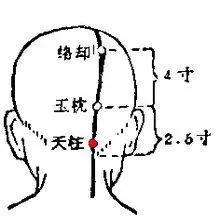
10. Massaging the Bladder Meridian’s Tianzhu Point Can Prevent and Treat Occipital Pain
The Tianzhu point is located at a vascular and nerve junction. Regularly massaging the Tianzhu point on the bladder meridian can effectively eliminate occipital pain.
The specific method is: place both thumbs on the Tianzhu point, with the other four fingers naturally supporting the head; apply firm pressure upwards at a 45-degree angle for 5 seconds, ensuring the pressure is comfortable.

11. Massaging the Sanjiao Meridian’s Yangchi Point Can Alleviate Cold Hands and Feet
Massaging the Yangchi point on the Sanjiao meridian can treat cold hands and feet. Regularly massaging this point can promote blood circulation, balance hormone secretion, and warm the body, thus eliminating the symptoms of cold hands and feet.
When massaging, it is best to use both hands together. First, use the middle finger of one hand to press the Yangchi point on the other hand, then switch hands. The massage should be prolonged and gentle.
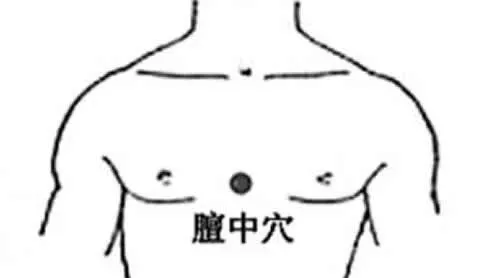
12. Massaging the Pericardium Meridian’s Danzhong Point Can Regulate Qi in the Chest
The Danzhong point is located in the center of the chest and is one of the eight meeting points, where qi converges and gathers. It is a key point for regulating qi in the body, with effects such as broadening the chest, regulating qi, stopping cough, relieving asthma, transforming phlegm, unblocking yang, and dispersing stagnation. It is mainly used to treat chest obstruction, heart pain, cough, and asthma. The Danzhong point is the mu point of the pericardium meridian, which protects the heart. Therefore, stimulating the Danzhong point also has calming effects, clearing the heart, and relieving anxiety, used for treating palpitations and irritability.
When massaging, you can lie on your back or sit upright, using the pad of your middle finger to knead the point, alternating between clockwise and counterclockwise motions. The pressure should be moderate, with even and gentle techniques, avoiding excessive force. Massage once in the morning and once in the evening for 3-5 minutes each time.
Advice from an Experienced TCM Practitioner
There is a pericardium surrounding the heart, which has an important function of protecting the heart from external pathogens. If external pathogens invade, the pericardium will protect the heart. Once the heart is affected, it will manifest in the pericardium. Therefore, it is essential to take care of the pericardium by regularly massaging the pericardium meridian. When massaging, first locate the points such as Zhongji, Laogong, Daling, Neiguan, Jianshi, Qimen, Quze, Tianquan, and Tianchi, then press each point for 2-3 minutes daily.
Share this with those who care
The more people see it, the more health there is!
Today's Recommendation

